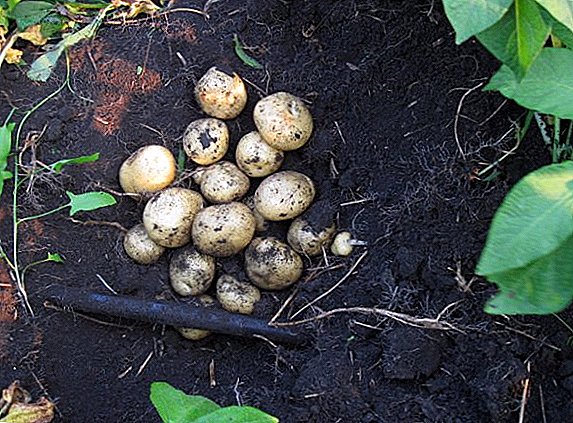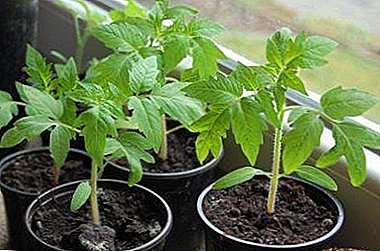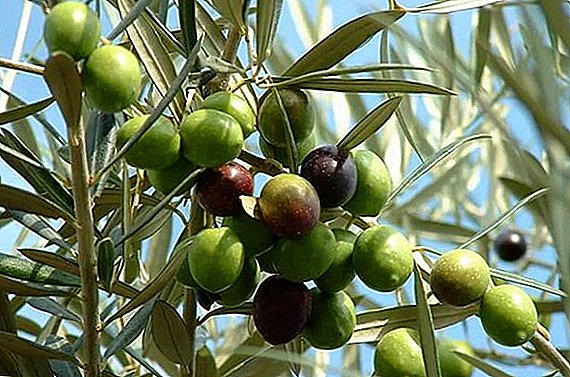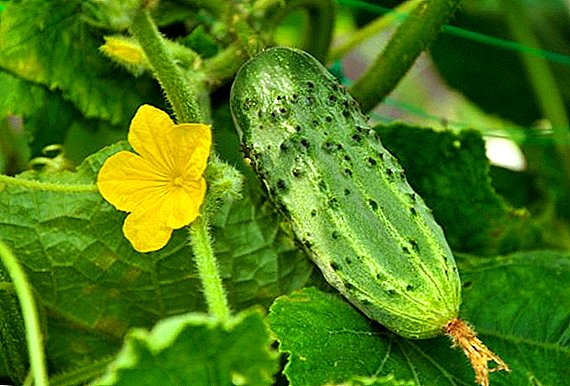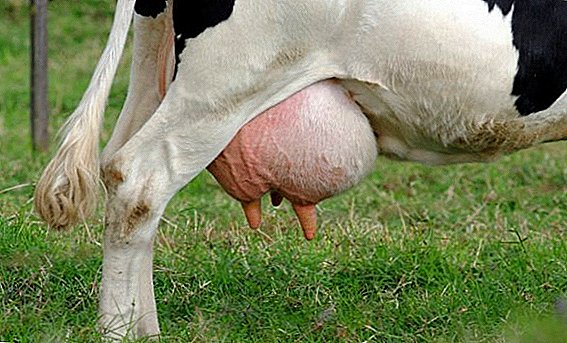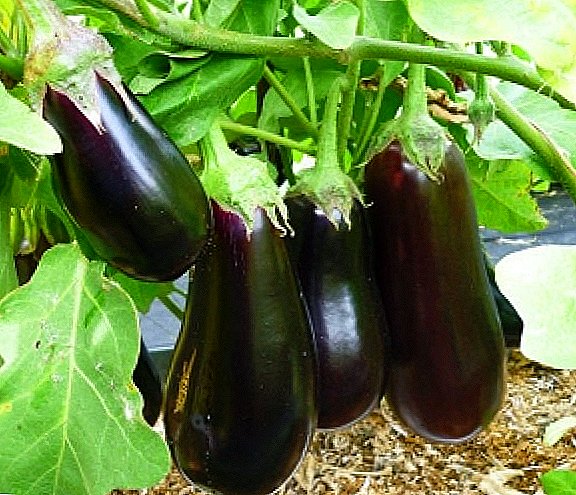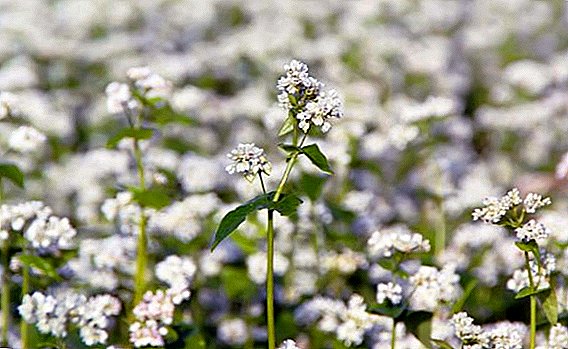 Soil is not only a source of crops, but also a unique biosystem. Soils may be different in their characteristics, but they are all united by the fact that they need feeding.
Soil is not only a source of crops, but also a unique biosystem. Soils may be different in their characteristics, but they are all united by the fact that they need feeding.
Among them are various means and compositions, but experienced agronomists still prefer "green feeding" in the form of individual plant species. Consider the usefulness of buckwheat as a siderata, and what its agrotechnical description promises.
What is the value of sideratov
Before proceeding to the consideration of culture, we will find out what benefits the use of green-siderant culture in crop rotation offers. This group includes about 300 species - it is buckwheat and beans, cabbage and cereals. More rarely used cruciferous-type oilseed radish.  Any of these plants exhibits its value in the following:
Any of these plants exhibits its value in the following:
- enrich the soil with nitrogen and organic matter (the first "work" on the green mass of future crops, while organics improves fertility);
- loosening the top layer, normalize air circulation and moisture. In this regard, the leadership of the cereals;
- penetrating deep into the roots saturate the fertile layer of minerals;
- due to the thick mass minimize the number of weeds and retain moisture;
- prevent erosion and weathering;
- in the summer they do not let the earth dry and crack; in the fall they prevent it from eroding. During the cold season, they keep the ground warm;
- Finally, all these cultures stand out for their unpretentiousness, rapid growth and cheapness (other types of contributions are simply not needed for their cultivation).
Important! For soils with sandy-clay composition is ideal lupine. In such conditions, it is able to replace manure, although with a higher clay content this plant loses its qualities.
Such plants are very often used by expanding farms, which introduce new areas into circulation. The fact is that siderats not only protect, but also restore the soil (for example, if there are traces of construction work on the site or the land has been tightly packed with equipment for many years). 
Buckwheat as siderat: pros and cons
Usually, the arguments presented are enough for the farmer to think seriously about such a technique. But even before you get the seeds, you should carefully consider the pros and cons of this step.
In favor of buckwheat often argue such arguments:
- powerful root system - taproot discourages a lot of branchy processes smaller. In total, they penetrate to a depth of 32-37 cm, practically leaving no room for weeds;
- the underground part of the plant in the process of growth produces valuable acids: citric, formic and other (they allow the "heirs" of this culture to assimilate further complex phosphorous compounds);
- normalizes soil microflora, especially after a dense sowing of grain. Simply put, the fruit layer is cleansed of microorganisms that provoke plant diseases;
- it is well received and acts on any soils, including heavy salt marshes;
- a short growing season - for some varieties 70-75 days are enough for full maturity (although there are also species that grow for three months);
- used in gardens and vineyards. There is a double benefit here - in the gutter circles and the aisle moisture remains longer plus flowering, always attracting bees to beautiful inflorescences;
- Plants planted between perennials heal the soil, which is slightly weakened by their presence;
- after mowing, the remains in the form of roots and the stems adjacent to the horizon actively rot, enriching the soil with large doses of nitrogen and potassium.
 It sounds tempting. But before being interested in when exactly to sow such a useful siderat as buckwheat, it would not hurt to recall its inherent shortcomings. Among them are:
It sounds tempting. But before being interested in when exactly to sow such a useful siderat as buckwheat, it would not hurt to recall its inherent shortcomings. Among them are:
- drought sensitivity. That is, in the season with rare rains, it simply will not show all its benefits;
- culture does not tolerate cold;
- with a high concentration of sowing, the roots often intertwine with each other, which complicates further tillage;
- despite its versatility, this crop as a predecessor is not suitable for all plants. Without knowing these nuances, there is a risk of being left without a crop (and even normal sprouting on the field).
As you can see, there are both advantages and disadvantages. But the latter is easy to minimize, knowing all the subtleties of agricultural technology.
Did you know? The use of green fertilizer is part of the concept of organic farming, which has been practiced by mankind since the very beginning of agricultural science. Departure from the scheme occurred at the turn of the XIX-XX centuries, when in the struggle for the harvest began to massively apply chemical compounds.
Cultivation technology
The first thing you need to know exactly what is the air-water balance in a particular area. Well, if you had to deal with a long-known field, the "character" of which is studied to the smallest detail.  The task becomes more complicated if the plans to sow the soil that has not yet been put into circulation: any gardener knows that even on the same site not only the layer temperature can be different, but also the depth of the water. Do not forget about such a factor as microflora - it happens that in the deep layers often rotting roots from long-cut trees that attract harmful insects.
The task becomes more complicated if the plans to sow the soil that has not yet been put into circulation: any gardener knows that even on the same site not only the layer temperature can be different, but also the depth of the water. Do not forget about such a factor as microflora - it happens that in the deep layers often rotting roots from long-cut trees that attract harmful insects.
Important! Chernozems are sensitive to constant overfeeding: seasonally making compost together with planting of green manure will give tangible results only during the first couple of years, after which the harvest can remain for a long time at about the same level.
Convinced of the complete readiness of the site, you need to determine exactly which plants will be used as the main ones, and find out how compatible they are with buckwheat.
For which crops it is better to use
Buckwheat itself is considered the best predecessor for almost all garden species: potatoes and tomatoes, cucumbers and strawberries. Carrots and beets, too, will not mind.
Thus, you can prepare the soil for planting greens - dill with sorrel, celery with parsley, as well as spicy cumin and fennel.  Buckwheat is also effective on the eve of planting fruit bushes and trees.
Buckwheat is also effective on the eve of planting fruit bushes and trees.
The use of this plant before planting with the participation of grain is allowed only on loose and well-groomed soils.
Such side crops as mustard, rye and phacelia are also used as siderates.
When and how to sow siderat
After all the calculations, it's time to find out how siderats are grown in practice, when to plant them, and when it is best to bury such a valuable plant as buckwheat.
For seeding, the moment is chosen when the frosts have finally receded, and the ground has warmed deep into at least 9-10 cm (usually in the middle of May).
If the air temperature stably keeps above +10, you can proceed:
- a flat cutter or cultivator passes through the site, the knives of which are exposed on a wide range of 10-15 cm;
- Seeds are embedded at 3-5 cm (for heavy soil) or for all 6 cm (for well-groomed). Consumption rate for weed removal - from 10 to 15 g / 1 sq. M. m (out of 1-1.5 kg per hundred);
- sowing rolls roller. In the garden, and all you can do back of the rake.
Did you know? Biologists have calculated that only about 1 hundred parts of the earth, intact by "chemistry", will collect about 200 kg of bacteria and the same number of worms. Together they can give more than 500 kg of the most valuable biohumus per season.
The procedure is simplified to the limit, if it is clear that heavy rain is about to break out - then the seeds can be simply scattered, not paying attention to the clarity of the rows.  Many spend sowing and throughout the summer, good weather allows. But the question of when exactly to sow buckwheat, as a full-fledged siderat, not in summer, but in the fall (as an option - after potatoes), comes up against one nuance. With this approach, the interval between sowing and the first frost should be at least 1.5 months. True, in terms of efficiency, the seedlings will still be inferior to the May ones - the plants will bloom, but in the spring moisture is better circulating.
Many spend sowing and throughout the summer, good weather allows. But the question of when exactly to sow buckwheat, as a full-fledged siderat, not in summer, but in the fall (as an option - after potatoes), comes up against one nuance. With this approach, the interval between sowing and the first frost should be at least 1.5 months. True, in terms of efficiency, the seedlings will still be inferior to the May ones - the plants will bloom, but in the spring moisture is better circulating.
Learn more about the beneficial properties of plain and green buckwheat, as well as buckwheat honey.
How to care
Due to the short growing season and unpretentiousness, the plants do not cause much concern.
the main thing - to ensure normal hydration. In regions with a moderately rainy climate, watering is not required at all. It is more difficult in areas where the warm season is consistently accompanied by droughts: then it is necessary to water the sowing at least once a week using a sprayer.
But to bring the soil to a state of thick dirt is still not worth it - such shoots do not tolerate both drought and excess water.
Important! The dates of sowing and harvesting are shifted with an eye on the weather conditions in a particular region. In a warm belt, it is quite possible to achieve a 3-fold landing per season — after this, wheatgrass will not be visible for several more years.
Regularly inspect the shoots: they appear as early as 7-10 days after planting, and after another month “in the warmth” you can see flowers on the lower shoots. After 2-3 days, the color starts up and along the lateral processes.
The flowering period takes on average a month (having studied the data on different varieties, it is easy to see the difference - some species fade away in three weeks, while others hardly fit into 40 days). It is during this period that the cleaning is carried out. 
When to clean
Right during flowering. On fertile and moist soils, this work is best done in the first few days after the first flowers appear.
It all looks like this:
- the green is mown;
- the roots are cut to a depth of 7-10 cm, after which the mass is mixed with the ground so that part of the cover remains on the surface as a mulch;
- the remaining plants play the role of compost.
After mowing, it is necessary to sustain a break of 2-3 weeks, and only then proceed to planting garden crops. This time is enough for the soil to absorb the maximum of useful substances from such a “blank”.
Did you know? In the Sumerian chronicles, there is a mass of subjects related to agriculture. One of them looks fiction from the standpoint of our day: it is described that local peasants, with the help of an ordinary horned stick, achieved wheat yields of almost 300 centners per hectare. How true this is - historians and archeologists still argue.
Having learned about the usefulness of buckwheat as a siderat, how to sow it, and when to mow, you can effortlessly increase the yield on your plot. We hope the result from its use will be tangible. Successes in the field and in the garden!


